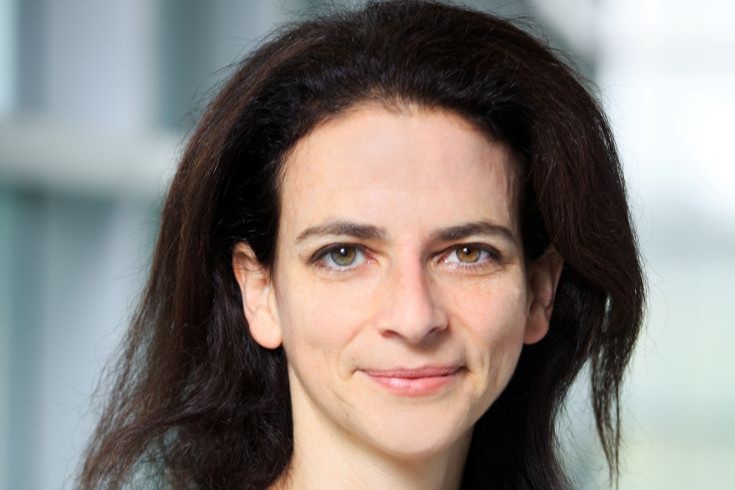Faculty Spotlight: Avital Rodal
 Every month, we interview a faculty member for our undergraduate newsletter. In October, 2022 we spoke to Avital Rodal, Associate Professor of Biology.
Every month, we interview a faculty member for our undergraduate newsletter. In October, 2022 we spoke to Avital Rodal, Associate Professor of Biology.
Can you tell me a little about your academic background and your journey to Brandeis?
I grew up in Ottawa, Canada. I was an undergraduate at MIT where I majored in Biology and Chemical Engineering, and a PhD student at the University of California, Berkeley in Molecular and Cell Biology. I had the opportunity to spend time at Brandeis as a visiting scientist while I was a graduate student, and I discovered that this place was full of truly interdisciplinary collaborations between biologists and physicists and mathematicians and chemists. Because of this, world-class discoveries were being made in a collegial and tight-knit atmosphere. This was pretty different from the large institutions I had trained in, and I really liked it. So, after my postdoctoral training (which was back at MIT), I was delighted to come back to Brandeis as an assistant professor in 2010.
Can you describe your research into the traffic control system inside neurons?
Research in my lab focuses on the cellular postal system, which packages specific molecular cargoes into tiny compartments called vesicles, and directs them to different destinations within cells. We’re also interested in “extracellular vesicles” that can carry messages between cells, or else serve as a garbage dump to get rid of specific material that a cell doesn’t want. Over the last decade or two we have learned more and more about the genes and proteins that help make postal sorting decisions, so that we can predict how to tweak these genes and proteins divert cargoes from one destination to another, to learn more about how the system works. This is particularly important in neurons, which have very elongated and branched shapes, so different neighborhoods within a single nerve cell might be very far from each other, and have very different transportation needs. The genes that encode this transport machinery are often defective in patients who have neurological diseases like Alzheimer’s Disease, Parkinson’s Disease, and ALS. The fact that you specifically get a neurological disease even though the gene is mutated in every cell and organ in your body tells you how important this cellular postal system is for the function of neurons and the brain.
Why do you use fruit flies in your research?
The genes and proteins that control transport in neurons are very similar in all animals, but are somewhat simplified (in number and complexity) in flies so it makes them easier to study. Flies are also fantastic experimental organisms because they are easy to grow in the lab, and over the last century researchers have developed exquisitely precise tools to change and control their genes and proteins. For example, we can easily stick a label onto a protein of interest and directly watch it traffic through the cellular transport system inside neurons in a living animal, using the cutting-edge microscopes we have at Brandeis. Fly neurons also work essentially similarly to human neurons, so when we alter them to express human disease proteins, they can serve as a model for that disease. In addition to working in neurons, we also biochemically purify the proteins involved in the transport system to watch (in a test tube or on a microscope slide) how a more simplified set of parts work together to package cargoes into vesicles.
What could this research lead to in the future?
One thing that current research can lead to is new ideas for future research and discoveries. Every project we do forms tendrils of new observations that lead to new projects – there are still lots of unanswered questions about how the cellular packaging system works. The more we learn about these mechanisms, the more we discover about how biology has solved some challenging logistical problems to distribute materials efficiently and in a controlled way. Another important and related thing that can come from our discoveries is figuring out which of the hundreds or thousands of parts of the transport system we might target as therapies for neurodegenerative disease. By tweaking these parts in our experiments and figuring out how they work, we can imagine new ways to design drugs or gene therapies to precisely target them in a patient.
What excites you about working with Brandeis students?
I have seven undergraduates working in the lab now, under the mentorship of more senior lab members (PhD students, postdocs, and research scientists). I love the curiosity and energy and enthusiasm that Brandeis students bring to our group. They each have great questions and ideas unique to their individual interests and coursework that make us think about our projects in new ways. They also help the more senior lab members hone their mentoring skills as they lead teams to move their research projects forward; nearly all of our published research papers have undergraduate authors. Our students are also just fun, interesting people, who help us see the campus beyond the lab and classroom, and understand the breadth of what is going on in Brandeis life.